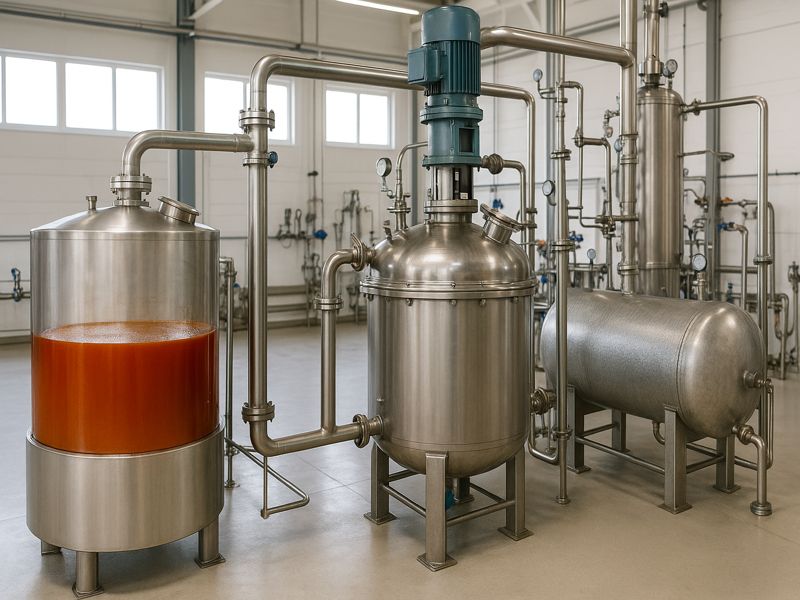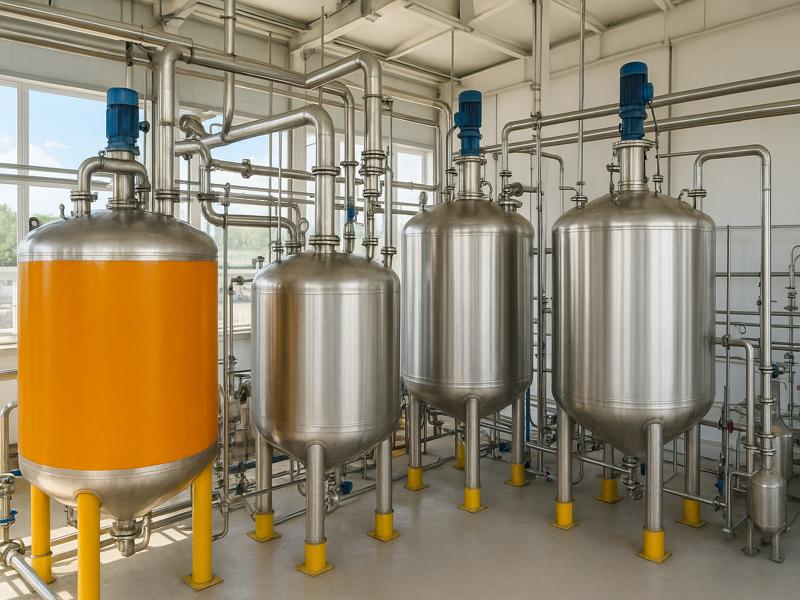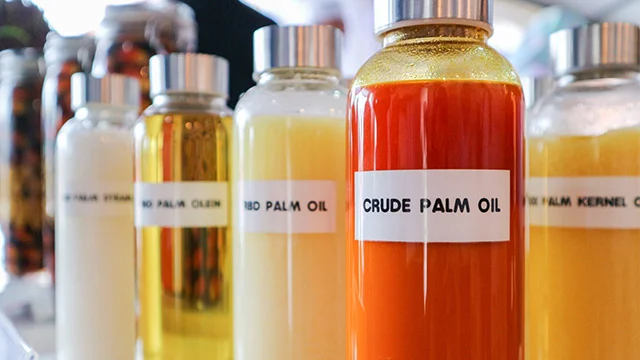One of the most popular edible oils in the world, palm oil is utilized in a variety of industries, including food, cosmetics, biofuels, and chemicals. However, crude palm oil (CPO) extracted from the palm fruit is not ready for direct use—it contains impurities, free fatty acids (FFA), colorants, and odors that must be removed to meet quality and safety standards. Refining palm oil enhances its shelf life, improves taste and appearance, and ensures it meets international specifications.
This article provides a comprehensive step-by-step guide to palm oil refining, covering the key stages, equipment involved, quality parameters, and best practices for industrial processors.
Understanding Crude Palm Oil
Before diving into the refining process, it’s important to understand the characteristics of crude palm oil. Through mechanical pressing, CPO is separated from the oil palm fruit’s flesh (mesocarp). It typically has:
- High free fatty acid (FFA) content: 3–5%, depending on handling.
- Carotenoids: Natural pigments giving the oil its deep orange-red color.
- Moisture and impurities: Small particles, gums, and water from processing.
- Odors and flavors: Resulting from oxidation or enzyme activity.
The refining process aims to remove these unwanted components while minimizing loss of neutral oil and preserving beneficial properties.
An outline of the process used to refine palm oil
Palm oil refining typically involves three major steps:
- Degumming and Neutralization (Chemical or Physical Refining)
- Bleaching
- Deodorization
Optional steps, such as winterization (fractionation) or hydrogenation, may follow depending on the desired final product characteristics.
Refining can be done via chemical refining (using caustic soda to neutralize FFA) or physical refining (using steam stripping to remove FFA). Palm oil is particularly well-suited for physical refining because of its relatively low phosphatide content.

Degumming and Neutralization
Degumming
Objective: Remove gums, phospholipids, and other impurities that can affect stability and cause issues during later stages.
Process:
- Water Degumming: Water is added to the heated crude oil (around 80–90 °C). Hydratable gums absorb water, swell, and can then be separated by centrifugation.
- Acid Degumming: For non-hydratable gums, a small amount of acid (e.g., phosphoric or citric acid) is added before water. This converts the gums into a removable form.
Equipment Used:
- Degumming tank with agitators
- Heat exchangers
- Centrifugal separators
Key Parameters:
- Temperature: 80–90 °C
- Water addition: 2–3%
- Acid addition: 0.05–0.2%
- Retention time: 20–30 minutes
Neutralization (Chemical Refining)
In chemical refining, FFAs are neutralized using caustic soda (NaOH), forming soapstock, which is then separated.
Process:
- Caustic soda is mixed into the degummed oil.
- FFA reacts with NaOH to form soap.
- Soapstock is removed by centrifugation.
- The neutralized oil is washed and dried.
Drawback: Slightly higher neutral oil loss due to soap formation.
Physical Refining Alternative
Physical refining skips chemical neutralization. Instead, the degummed oil proceeds directly to bleaching and then deodorization, where FFAs are removed by steam stripping. Because it uses fewer chemicals, produces less wastewater, and increases yield, this approach is recommended for palm oil.
Bleaching
Objective: Remove color pigments (mainly carotenoids), residual soaps, trace metals, and peroxides to improve oil stability and appearance.
Process:
- The oil is heated to around 100–120 °C under vacuum.
- Bleaching earth (activated clay) and sometimes activated carbon are added to adsorb pigments and impurities.
- The mixture is stirred to ensure contact between the oil and the adsorbents.
- After the required retention time, the mixture passes through a filter to separate the spent earth.
Equipment Used:
- Bleaching tank with agitator
- Vacuum system
- Filtration unit (filter press or leaf filter)
- Clay dosing system
Key Parameters:
- Temperature: 100–120 °C
- Pressure: 50–70 mbar
- Bleaching earth dosage: 0.5–2%
- Contact time: 15–30 minutes
Considerations:
- The quality of bleaching earth affects efficiency.
- Overuse can increase oil loss.
- Proper filtration ensures no clay remains in the oil.
Deodorization
Objective: Remove volatile compounds, FFAs (in physical refining), and unwanted odors or flavors to produce neutral, bland-tasting oil suitable for food use.
Process:
- Oil is heated to 240–260 °C under high vacuum (2–6 mbar).
- Stripping steam is injected to carry away volatile substances.
- The process may last 2–4 hours, depending on plant design and desired FFA reduction.
Equipment Used:
- Deodorizer (packed column, tray column, or combined system)
- Steam generation unit
- Vacuum system
- Heat recovery systems
Key Parameters:
- Temperature: 240–260 °C
- Vacuum: 2–6 mbar
- Steam rate: 1–3% by weight
- Time: 2–4 hours
Output:
- Refined, Bleached, and Deodorized Palm Oil (RBDPO)
- Distillate containing FFAs and volatile compounds (can be processed for FFA recovery or biofuel use)
Optional Processes: Winterization and Fractionation
Palm oil contains a mixture of saturated and unsaturated fats. Fractionation (also known as winterization) is used to separate palm oil into liquid (olein) and solid (stearin) fractions for various industrial applications.
Process:
- The refined oil is slowly cooled under controlled conditions.
- Crystals form (stearin fraction) and are separated by filtration.
- The liquid fraction (olein) remains clear and is used for cooking oil and frying.
Applications:
- Palm olein: Cooking oil, margarine, shortening
- Palm stearin: Bakery fats, soaps, candles, and industrial uses
Quality Control During Refining
Strict quality control is maintained during the refining process to guarantee that the finished oil satisfies customer and regulatory requirements. Key parameters to monitor include:
| Parameter | Crude Palm Oil | RBD Palm Oil |
| FFA (%) | 3–5 | < 0.1 |
| Moisture (%) | < 0.2 | < 0.1 |
| Color (Lovibond) | Deep orange-red | Pale yellow |
| Odor | Strong | Neutral |
| Impurities (%) | 0.1–0.3 | < 0.05 |
Regular sampling, laboratory testing (e.g., titration for FFA, moisture analyzers, colorimeters), and equipment calibration are critical for maintaining consistency.
Palm Oil Refining Equipment Line
A typical palm oil refinery line includes:
- Crude oil storage and heating
- Degumming/Neutralization section
- Bleaching section
- Deodorization section
- Fractionation (optional)
- Storage tanks for RBD oil
- Packing section
Automation levels vary depending on plant scale. Small-scale refineries (1–10 TPD) may use batch systems, while large industrial plants (50–1000 TPD) use continuous refining systems with advanced PLC control for precise temperature, vacuum, and steam management.
Chemical vs. Physical Refining: A Comparison
| Aspect | Chemical Refining | Physical Refining |
| FFA Removal | Caustic soda neutralization | Steam stripping |
| Waste | Soapstock and wash water | FFA distillate |
| Oil Loss | Slightly higher | Lower |
| Environmental Impact | More wastewater | Less chemical use |
| Suitability | High-phosphatide oils | Low-phosphatide oils like palm |
Conclusion: Physical refining is the preferred method for palm oil due to lower cost, higher yield, and reduced effluent production.
Environmental and Sustainability Considerations
Palm oil refining generates by-products such as soapstock, spent bleaching earth, and deodorizer distillate, which require responsible handling:
- Soapstock can be acidulated to recover FFA for soap or biodiesel.
- Spent bleaching earth should be safely disposed of or processed to recover residual oil.
- Deodorizer distillate contains valuable tocopherols and sterols that can be recovered.
Additionally, energy efficiency is crucial. Modern refineries use heat recovery systems to preheat incoming oil with outgoing hot oil, reducing fuel consumption.
Certifications like RSPO (Roundtable on Sustainable Palm Oil) highlight not only responsible planting but also environmentally conscious refining methods.
Final Product Applications
Refined palm oil (RBD palm oil) and its fractions are used across multiple industries:
- Food: Frying oil, margarine, shortening, baked goods, confectionery
- Cosmetics: Soaps, creams, surfactants
- Bioenergy: Biodiesel feedstock
- Industrial: Lubricants, candles, oleochemicals
Customization of refining parameters allows producers to tailor the final oil characteristics for specific applications.
Refining palm oil is a crucial stage that transforms crude extract into high-quality, market-ready oil. Through degumming, neutralization, or steam stripping, bleaching, and deodorization—along with optional fractionation—processors achieve the desired purity, stability, and versatility for various applications.
Choosing between chemical and physical refining depends on raw material quality, plant capacity, and environmental considerations. With proper process control, equipment selection, and quality assurance, refiners can maximize yield, ensure compliance with international standards, and support sustainable palm oil production.



